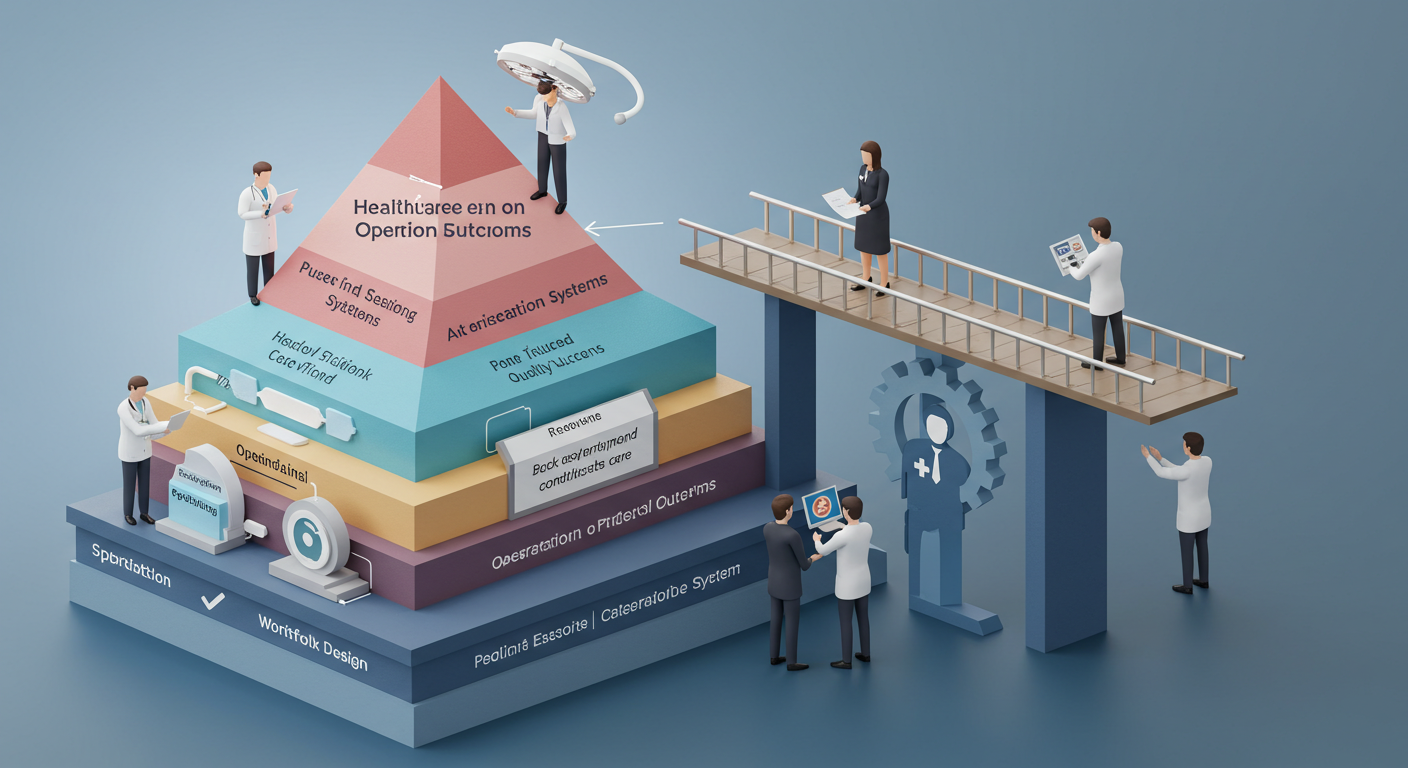
Why Clinical Outcomes Are an Operations Problem First
A common misconception is that physicians and clinical staff are the only ones responsible for clinical outcomes such as patient recovery rates, lowering the risk of complications, mortality, readmissions, and overall quality of life. Sure, they play a major role in patient care, but clinical outcomes have a lot to do with healthcare operations and their processes. This article sheds more light on this incredibly important subject and explains why operations affect clinical outcomes.
Table of Contents
Why Clinical Outcomes Are an Operations Problem First
Does Operational Efficiency Really Affect Clinical Outcomes?
How Operations Influence Clinical Outcomes
Incomplete Patient Information
Lack of Standardization in Care Pathways
Impaired Supply Chain Management
Ineffective Patient Flow Management
Does Operational Efficiency Really Affect Clinical Outcomes?
For quite some time, clinical outcomes have been associated primarily with the expertise of physicians and the effectiveness of the medical interventions they perform or recommend. The common belief is that good medicine alone is enough to produce good outcomes. The reality is entirely different, though.
One study found that operational failures actively configured physicians’ work by requiring significant compensatory labor to deliver the goals of patient care. However, these efforts to compensate for suboptimal work systems are often concealed, thereby sending an incomplete picture of what physicians actually do and the problems they face when safeguarding patient care and their well-being.
Even the most advanced treatments may fail if the operational infrastructure supporting them is ineffective. A doctor's talent and effectiveness are valuable tools in patient care, but they’re often not enough to cover the issues affecting operational infrastructure. For example, despite a doctor’s best efforts to care for the patient, their treatment approach may not work if they have insufficient patient information or there is a shortage of supplies.
How Operations Influence Clinical Outcomes
Operational infrastructure can either positively or negatively affect clinical outcomes. In order to improve patient care, it is important to understand how behind-the-scenes processes impact patient recovery, mortality, and other outcomes.
Incomplete Patient Information
Poor clinical outcomes often result from incomplete or fragmented patient information. Evidence confirms that missing clinical information on patients is quite common and may negatively affect their care. Information such as medical history, demographic data, treatments, family structure, and test results is often unavailable when doctors need it.
To make informed decisions, clinicians need access to timely, accurate, and comprehensive data. When operational systems fail to support seamless data flow through electronic health records (EHRs), laboratory systems, or imaging platforms gaps in care may arise. Well-informed clinicians can make more accurate diagnoses and decisions, lowering the risk of errors and improving outcomes.
Fortunately, this issue can be addressed through unified data platforms, clinical decision support tools that flag risks and inconsistencies, and interoperability across departments and facilities.
Lack of Standardization in Care Pathways
Although a personalized approach to medicine is important, unwarranted variation may arise from a lack of standardized protocols, workflows, and communication channels. Decreased variability leads to more predictable, higher-quality care and improved patient safety.
To improve clinical outcomes, healthcare organizations can develop and enforce evidence-based clinical pathways. These protocols can be integrated into electronic health records with prompts and automation. Training clinical staff across all departments to follow standard procedures also plays a critical role.
Impaired Supply Chain Management
Shortages or delays in medical supplies, medications, or equipment can disrupt even the most well-structured treatment plans. Research suggests that medical product shortages can negatively affect patients in many ways, from poor clinical outcomes to diminished quality of life. Inefficient supply chain management incurs significant costs and reduces the ability to provide high-quality, timely care.
From elective procedures to emergencies, gaps in inventory management can derail clinical timelines. The availability of the right tools and medications at the right time enables timely interventions and reduces complications.
To address this, healthcare organizations should implement real-time inventory tracking, automated reordering systems, and predictive analytics. Building relationships with multiple vendors can also boost supply chain resilience.
Ineffective Patient Flow Management
Operational inefficiencies in patient flow can delay care and compromise outcomes. Long wait times, bottlenecks in emergency departments, and ICU overcrowding increase the risk of adverse events and reduce the quality of care delivery.
Efficient patient flow management supports timely interventions, reduces errors, and lowers staff stress. Solutions include monitoring real-time department capacity through dashboards, applying lean methodologies to streamline admissions and discharges, and coordinating care transitions with external facilities to prevent delays.
Lack of Technology and Automation
Technology has transformed healthcare operations by simplifying processes and improving care quality. Yet many settings still rely on inefficient manual systems. Slow documentation, poor communication, and outdated diagnostic workflows can delay care and lead to preventable mistakes.
By adopting technologies like natural language processing (NLP) to auto-document encounters and extract insights from clinical notes, organizations can reduce errors and increase efficiency. Additional strategies include automating alerts for high-risk patients and integrating remote monitoring tools for post-discharge care.
Conclusion
Clinical outcomes are shaped by more than just clinical expertise they’re deeply influenced by the operational systems that support care delivery. A resilient operational infrastructure ensures seamless workflows, prevents errors, reduces costs, and ultimately improves patient outcomes. To elevate the standard of care, healthcare organizations must routinely evaluate their operational systems and implement changes that lead to measurable improvements in clinical results.
References
https://pmc.ncbi.nlm.nih.gov/articles/PMC7062478/
https://pmc.ncbi.nlm.nih.gov/articles/PMC548207/
https://www.ncbi.nlm.nih.gov/books/NBK583734/